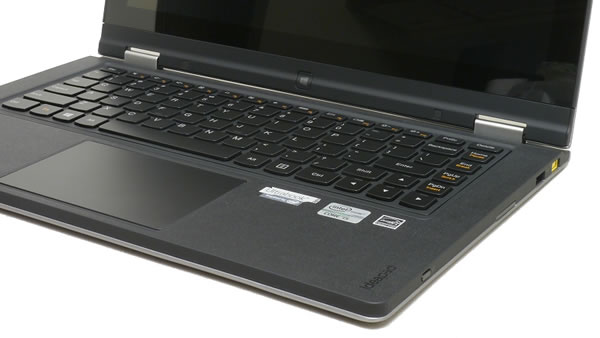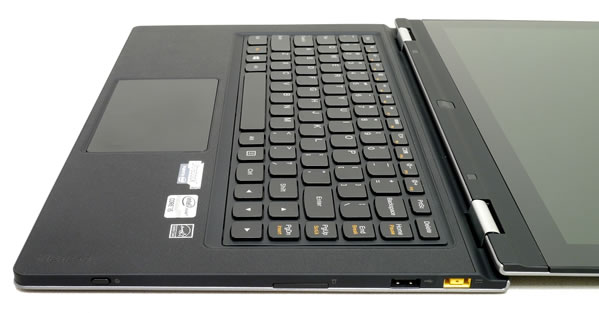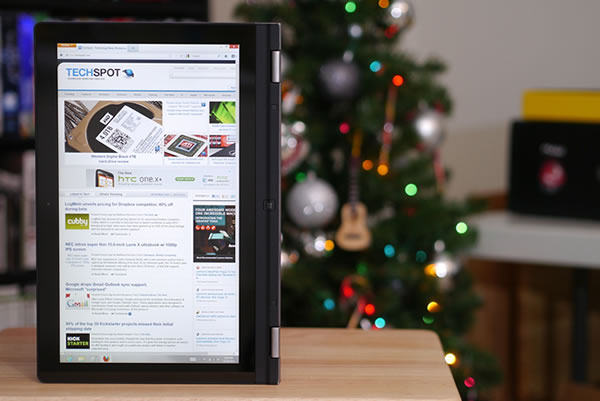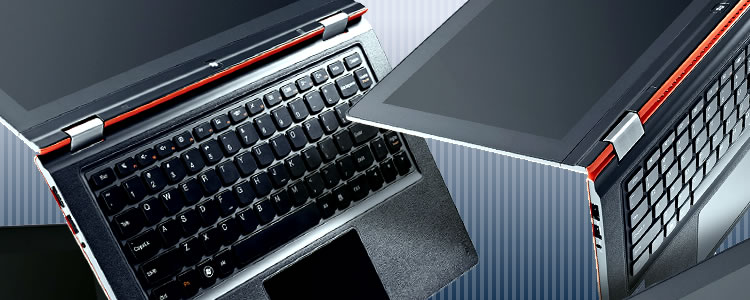Usage Impressions, Conclusion
As I mentioned earlier, using the Yoga 13 as a notebook is really no different than any other system in terms of usability. It's a whole different story when you transform it to tablet mode, however. The whole tablet experience is heavily reliant on the operating system and its touch interface. That aspect of the system works surprisingly well, but it's not without fault.
At 3.4 pounds and 0.67-inches, it makes for one heavy tablet when you consider dedicated slates weigh a fraction of that (~1.5 pounds for a 10-inch tablet). Furthermore, it's pretty thick as far as tablets go but given the internal hardware, that is to be expected.

Perhaps the saving grace for the Yoga as a tablet is the number of different orientations it can be used in. The display can be laid back flat to act as a true tablet or it can be angled in a tent-like manner or even flipped upside-down as a stand. Each orientation would of course have its benefits depending on exactly what you were trying to accomplish.
It's also worth mentioning that it's pretty darn nice to use what is essentially a 13.3-inch tablet, much for the same reason that people like the 5.5-inch display on the Galaxy Note II. Watching videos on the Yoga in tablet mode is much more enjoyable than on a standard 10-inch screen, especially when you have the system propped up in stand or tent mode.

With most of the recent laptops we've reviewed using solid state drives (Aspire S5, MacBook Pro Retina, etc.), I can't stress enough how important flash memory is, especially in a notebook where before it was rare to find a speedy storage solution. While the storage system in the Yoga 13 wasn't nearly as fast as the RAID 0 configuration of the S5, not having two drives that could potentially fail is a bit more reassuring.
There's also the complaint that there's only 128GB of storage on tap and while that's true, odds are that Lenovo, Microsoft and a host of other manufacturers are betting that cloud storage will be the next big thing. Services like SkyDrive can virtually offer all of the storage you'd ever need and it's accessible from anywhere with a network connection.
I conducted our standard notebook battery tests on the Yoga 13. Our video playback test consists of looping a 720p rip of the movie Inception at full screen with max brightness and Wi-Fi disabled. This is a taxing test that resulted in 5 hours and 4 minutes of battery life.

Our Powermark test consisted of running the application at default settings under the "Balanced" profile which gives a mixed workload of web browsing, word processing, gaming and video playback. This test was also run at max screen brightness and resulted in 3 hours and 21 minutes of uptime.
Our informal YouTube 4k resolution video test pushed the CPU all the way up to 99 percent usage at one point. The video never showed any signs of lag but with the processor pegged so high, one has to wonder what is going on. If you recall, the same clip on the Acer S5 (running the exact same processor and graphics card) only pushed the chip to around 60 percent usage. The key difference between the two systems, however, is the operating system.
The two speakers in the Yoga 13 are positioned out of sight under the keyboard. I was concerned that this would impede sound quality or noise levels but that wasn't really the case, even when the system was used in tablet mode as a stand with the keyboard laying flat on my desk. As for audio quality, the speakers sounded just fine albeit they didn't get very loud when cranked to 100 percent. Either way, audio remained clear with zero distortion so that's a plus.

I used Prime 95 to generate a full CPU load on the Yoga 13 in order to observe heat output and noise levels. The cooling fan, spinning at what I assume was full speed, wasn't very loud at all so don't expect any distractions even if you are working in a very quiet environment. The bottom of the notebook near the exhaust vents did get warm and I could feel warm air being pushed out of the system but again, it wasn't hot by any means and certainly nothing to be concerned with. After all, the processor only carries a maximum TDP of 17 watts.
Overall, I think Lenovo has shown that a convertible notebook can be a viable option in today's market, especially for someone that is still on the fence about wanting a tablet but still requiring a notebook for productivity purposes. You can expect to pay a slight premium considering the hardware that's included but that's also expected given the flexibility and hybrid nature of the system.
score
Pros: The Yoga screen and hinge system works really well. Great ultrabook overall, excellent quality screen, good value and decent performance. Nice keyboard and trackpad feel.
Cons: Too bulky for a standalone tablet replacement. Keyboard pressed against table when in tablet mode – it's not backlit.
